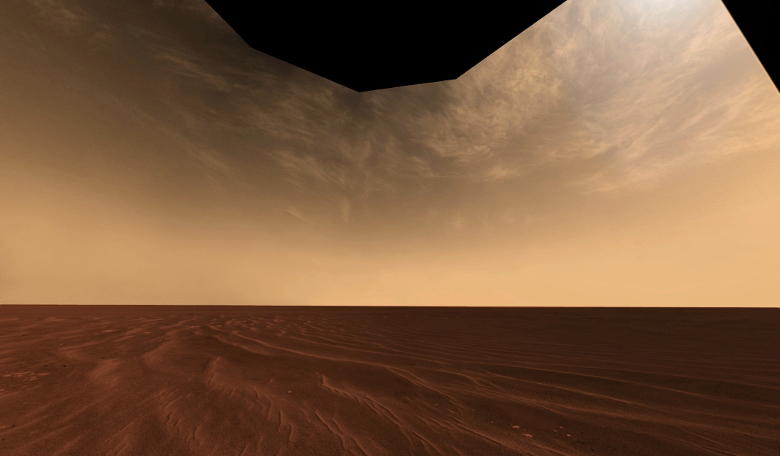The formation of large-scale features on Mars, in particular ancient valleys such as Warrego Vallis or Nandi Vallis, are postulated to have formed from a flowing liquid, most likely water. But how Mars sustained a climate suitable for liquid water to flow has been a major interest for astrobiological researchers for some time. Now researchers in the U.S modelling Mars’ climate are honing in on how Mars stayed warm long enough to make its valleys.
It has been suggested that large impacts during the Late Heavy Bombardment vaporised water from the colliding meteorite and ground ice mobilised by the impact, that was then later rained out over the planet to form the valleys.
Others argue that dense H2O and CO2 atmospheres could have warmed the Red Planet in its early days, sufficient enough for frozen water to melt and produce the run-off rates required to produce the ancient valleys. Other combinations of gases such SO2 (sulphur dioxide) and CH4 (methane) are also theorised, but although they might ‘fix’ one problem, disadvantages also creep in. SO2 for example forms sulphate aerosols which actually act to cool the climate, not heat it up.
Although both leading theories are well regarded, neither theory alone completely accounts for the amount of water needed to carve out the martian valley systems. However a combination of the two, could possibly achieve the results needed for long-term rainfall on Mars.
Building on the impact theory but with cloud coverage to stabilise the climate, two researchers based at prominent astrobiology institutes including the Carl Sagan Institute, Penn State Astrobiology Research Center and NASA Astrobiology Institute Virtual Planetary Laboratory, have constructed atmospheric models to test whether cirrus clouds in Mars’ early history could have kept the planet warm enough for long enough for liquid water to flow in vast volumes.
Cirrus clouds on Earth form when dry air rises turning water vapour into ice crystals. Technically these clouds produce precipitation, however it never reaches the ground. For their models, the duo, Ramses M. Ramirez and James F. Kasting, construct a single-column radiative-convective climate model and test different (ice) crystal sizes, cloud thicknesses, and cloud fractions to simulate differing cloud feedback mechanisms on the Red Planet.
Ramirez and Kasting found that given the right circumstances cloud residence times in an early Mars atmosphere appear to be about 4-5 times longer than those for Earth, nonetheless, warming by cirrus clouds only occurs if cloud coverage is approximately 75 - 100% of the planet.
However, the duo state that a more realistic cloud cover over the planet would be around 50% coverage or below - a similar figure to the average total cloud cover on Earth (which includes cirrus and all other cloud types).
Not only that, but Ramirez and Kasting found that with thicker clouds, higher atmospheric CO2 pressures, and smaller particle sizes, the efficiency of the models decreased. For Mars to be warmed by cirrus clouds, a limiting set of factors including an atmosphere of 0.5 bar and 1 km thick cirrus clouds are needed to give the desired results.
Given the narrow range of parameters needed, the team conclude cirrus clouds do not provide the necessary warming, suggesting that other greenhouse mechanisms are needed. However, the team do suggest that warming by cirrus cloud may be possible if the mean surface temperature of the planet is lower than their modelled value of 273 K and it may only need a reduction of eight degrees to make the difference.
On Earth, global mean surface temperatures during the Last Glacial Maximum were only about 3–7 K lower than today. Would a lower temperature still allow for large amounts of flowing water on the martian surface? The team suggest that 3-D climate models of Mars with smaller oceans than Earth should be pursued to test this hypothesis.
For more information on this research, see; http://arxiv.org/pdf/1608.03891.pdf











